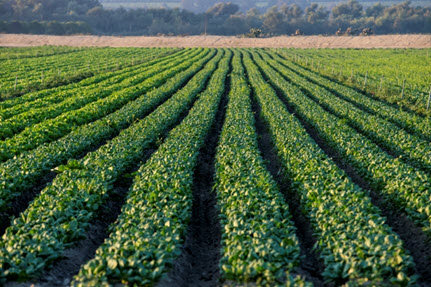There’s a lot of attention on lowering greenhouse gas emissions around the world. Agriculture is poised to take a leadership role in the effort. Here’s what to know about agricultural carbon credit markets and what they mean at the farm level.
Why carbon is so important today
Environmental sustainability is important to today’s food consumers – and it’s important to Nationwide®. The Nationwide Foundation is advancing research, education and outreach solutions to sustainable farming through over $16.8M invested in The Ohio State University — College of Food, Agriculture and Environmental Sciences. Nationwide knows environmental sustainability is fundamental to agriculture’s future.
In response to growing consumer demandi, food companies are creating new sustainability goals for their supply chains. This includes General Millsii, Nestleiii and McDonald’siv. The efforts are shining a spotlight on farm conservation.
"There are many reasons companies and organizations are jumping into the development of these markets. A common driver for their development is to foster healthy soils and ecosystems and reduce emissions," according to American Farm Bureau Federation Economist Shelby Myersv. "Many of the corporations involved are focusing on the public goodwill they’ll earn as consumers see them as playing a part in improving conservation and biodiversity."
Carbon credits for farmers
Now, agriculture companies have entered the carbon credit marketplace. The goal is to connect farm-level practices to food companies’ sustainability goals. And, it’s an effort to reduce agriculture’s carbon footprint.
Global agribusinesses like Bayer Cropsciencevi and startups like Norivii are creating systems to pay farmers to voluntarily integrate carbon-smart practices. According to the USDA Natural Resources Conservation Service (NRCS), those include:
- Cover crops
- Crop rotations
- Anaerobic digesters
- Buffer strips
- Tree establishment
- Conservation tillage
"These practices are used to improve soil health, reduce soil erosion, improve water quality and provide other natural resource benefits," Myers said. "Many contribute to carbon sequestration.”
Farmer payments and other hurdles
Carbon-smart farming practices must offer financial benefit to farmers paying to integrate them into their operations. Food and ag companies are currently working to determine per-acre payment structures for those efforts. It’s a major hurdle to farm-level adoption.
"Growing a crop or raising livestock requires significant cash to cover the associated expenses. Some farms can extend their risk tolerance to participate, while others may not have the resources, financial or otherwise," she said. "Barriers such as labor availability, education, verification costs and lack of quality broadband can prevent farmers and ranchers from being able to participate in these markets."
A work in progress
There are a lot of questions to be answered as the carbon credit marketplace develops. Tying farm-level practices to specific value propositions for farmers will be critical to the market’s development. Given the rapid pace of change in the ag carbon marketplace, Myers advises staying informed as it develops.
"It seems like almost every month companies of various sizes across many industries are announcing new sustainability commitments, along with sustainability programs and markets that farmers and ranchers can participate in," she said. "It's important to note that these credit markets are constantly evolving, and many are still under development or being refined in pilot stages. There is much more to explore, company-by-company and asset-by-asset, before making any decisions."
Nationwide is committed to protecting farmers and ranchers as they enter into the new ag carbon marketplace. Our Farm Certified agents will continue to stay on top of the evolving ag sector. We’ll be ready to ensure you can move forward with confidence, knowing your liabilities are covered.
